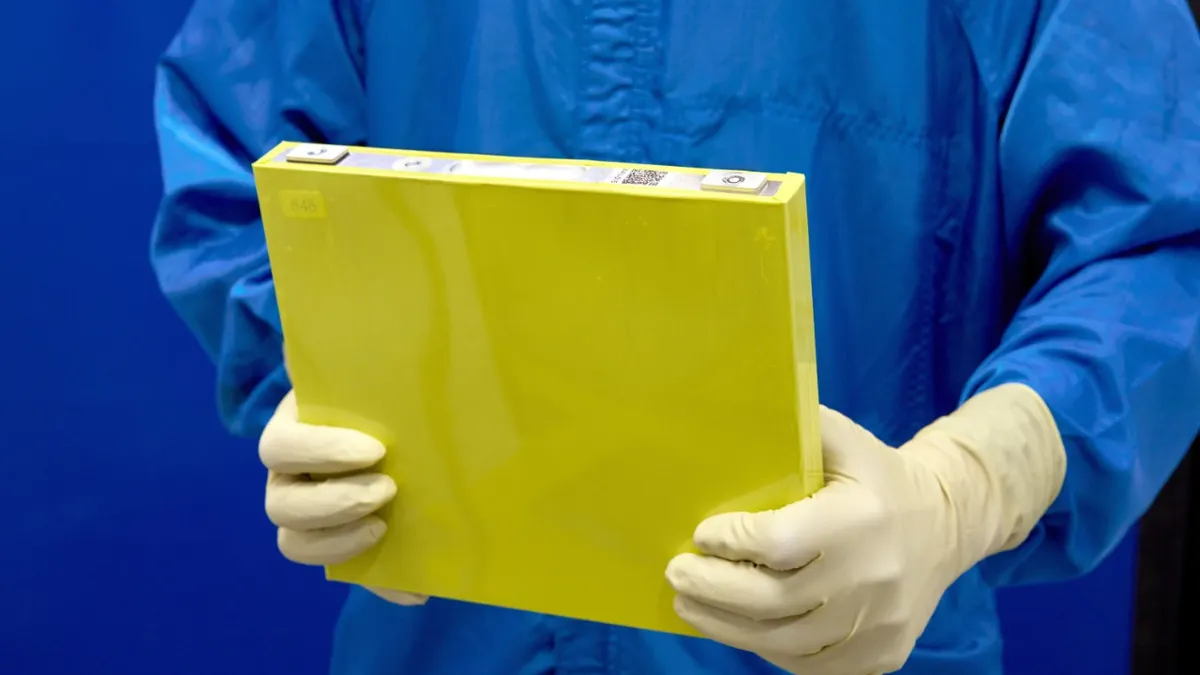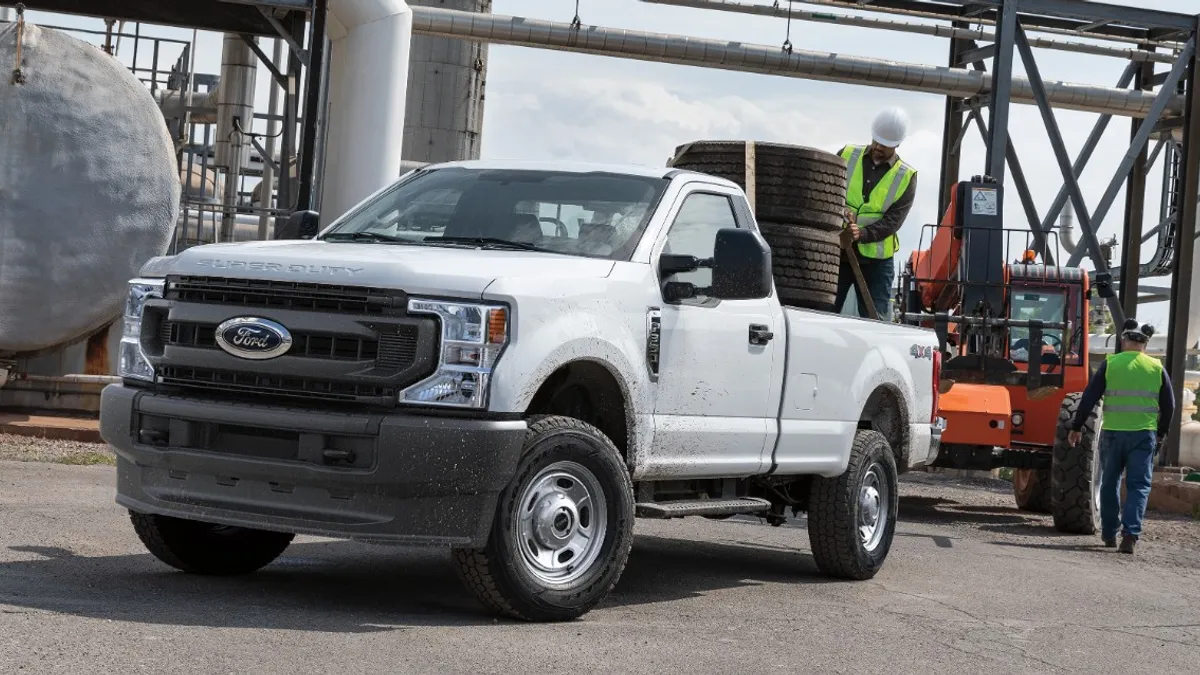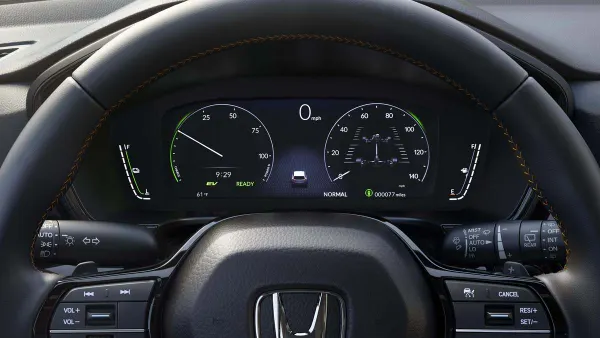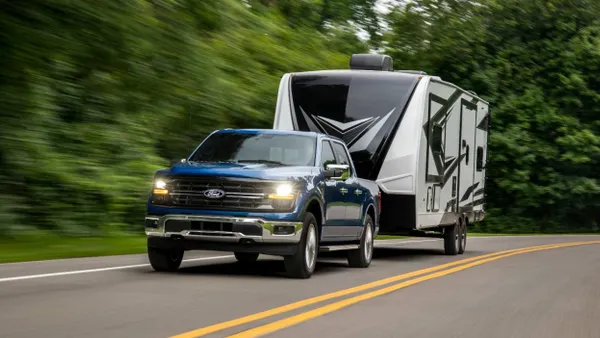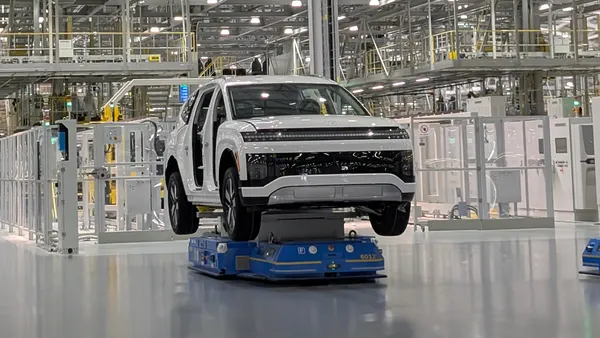Dive Brief:
- Battery engineers at General Motors and its joint venture partner LG Energy Solution have developed an improved lithium manganese-rich (LMR) prismatic battery cell design for the company’s future electric vehicles, the automaker announced in a May 13 press release.
- The LRM battery chemistry uses a higher percentage of lower-cost manganese to replace Cobalt, a critical raw material for EV batteries, making them less costly to produce while still delivering high energy density.
- GM aims to be the first major automaker to deploy LMR batteries in EVs. Its Ultium Cells joint venture with LG Energy plans to start commercial production of the battery cells in the U.S. by 2028 for full-size electric trucks and SUVs.
Dive Insight:
GM’s current EV models use nickel manganese cobalt aluminum oxide (NMCA) batteries, which contributes to improving driving range, but are costlier manufacture. LRM battery chemistry, on the other hand, can help GM make its future EVs more affordable.
A high nickel battery cell typically consists of roughly 85% nickel, 10% manganese and 5% cobalt, according to GM. But LMR cells contain around 35% nickel, 65% manganese, and “virtually no cobalt,” which can significantly reduce costs.
In addition, GM says its LMR prismatic battery cell design has 33% higher energy density compared to the best-performing lithium iron phosphate (LFP) or manganese cobalt aluminum oxide (NMCA) cells used in many EVs on the road today, and at a comparable cost.
The new LRM battery cells are not intended to replace GM’s current batteries. Rather they will be used for some electric models along with high-nickel and iron-phosphate cells for others. According to GM, the lower cost LRM prismatic cell batteries will primarily be used to expand customer choice in the electric truck and full-size SUV markets.
“We’re pioneering manganese-rich battery technology to unlock premium range and performance at an affordable cost, especially in electric trucks,” said Kurt Kelty, VP of battery, propulsion, and sustainability at GM, in the release. “As we look to engineer the ideal battery for each vehicle in our diverse EV portfolio, LMR will complement our high-nickel and iron-phosphate solutions.”
GM is targeting driving ranges of over 400 miles for its full-size electric trucks and SUVs equipped with LRM batteries, while achieving significant cost savings compared to today’s high-nickel battery cells the automaker is currently using.
The automaker said it began researching LRM battery cells a decade ago, which included prototyping cells at its Wallace Battery Cell Innovation Center in Warren, Michigan. The automaker accelerated its research in 2020 as its engineers collaborated with partners including LG Energy to achieve advancements in battery cathode materials, electrolytes, additives, form factors and assembly processes.
GM said researchers overcame LMR’s limitations in performance and durability that made them impractical for commercial use, according to the company.
“We’ve worked with our suppliers to optimize the materials in our LMR cells, adding proprietary dopants and coatings, along with particle engineering, process innovations, to achieve the right energy density and arrangement of battery materials inside the cell to keep them stable,” said Kushal Narayanaswamy, director of advanced battery cell engineering at GM, in a May 13 blog post.
By the end of 2024, GM said its researchers coated roughly one metric ton of LMR cathode material at the company’s Wallace Battery Cell Innovation Center, which included testing hundreds of large format prismatic cells in 18 different prototypes and three cell dimensions. In total, the tests were equivalent to 1.4 million miles of EV driving, according to GM.
Unlike the 4680 cylindrical cell format used by Tesla for the Model Y, prismatic cells can be stacked closer together inside an EV’s battery pack. Their flat design uses less space compared to cylindrical cell batteries, leading to higher energy density, as more cells can fit into each EV battery pack. The cells can also better dissipate heat for improved cooling performance with an outer case typically made of aluminum.
“That makes them substantially more efficient to package in full-scale trucks and SUVs,” Narayanaswamy said.
Prismatic cells also require fewer components to assemble battery packs, which contributes to lower costs. The design can reduce battery module components by 75% and total pack components by 50%, according to GM.
Pre-production of LRM battery cells is expected to begin at an LG Energy Solution facility by late 2027. The final cell design will be validated at GM's new Battery Cell Development Center in Warren, Michigan, that’s expected to be operational by 2027. The batteries will also be validated at an unnamed LG Energy Solution facility before series production begins.
“We’re excited to introduce the first-ever LMR prismatic cells for EVs, the culmination of our decades-long research and investment in the technology,” said Wonjoon Suh, executive VP and head of the Advanced Automotive Battery division at LG Energy Solution, in the release. “GM’s future trucks powered by this new chemistry are a strong example of our shared commitment to offering diverse EV options to consumers.”



